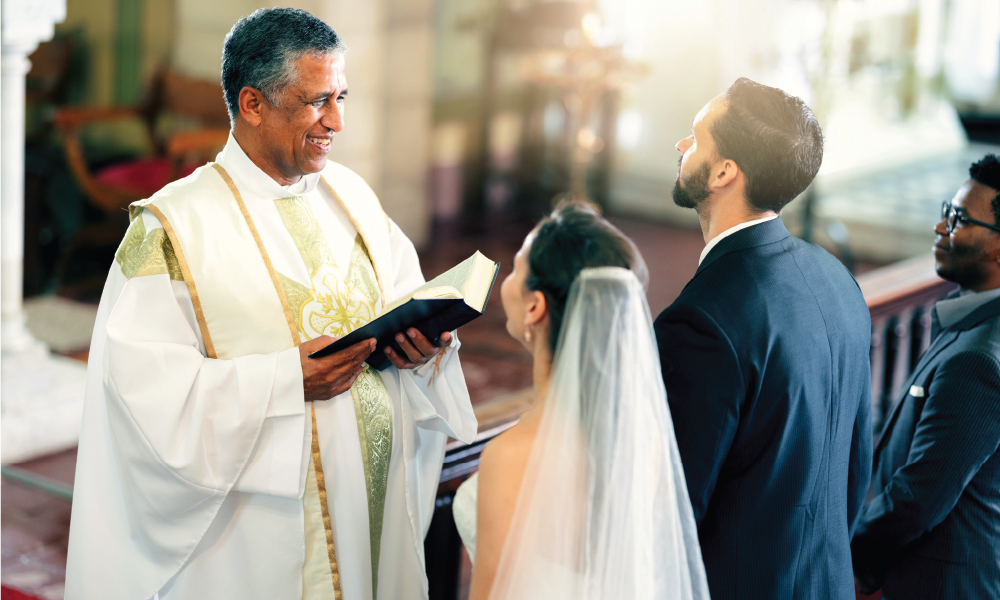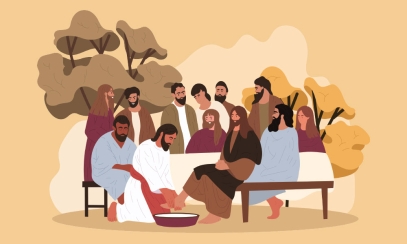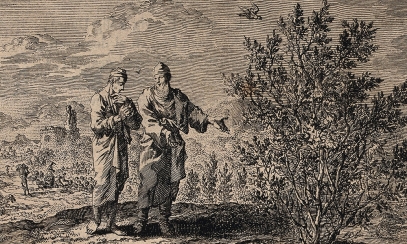
The biblical basis for the sacraments at the service of communion
St. John Paul II, in his apostolic exhortation, Ecclesia in America, described God as a Trinitarian communion, a unity in distinction. He also declared that all people are called to share in this communion of Father, Son and Holy Spirit. Communion, then, is both the source of and destiny planned for humanity. (33)
St. John Paul II, in his apostolic exhortation, Ecclesia in America, described God as a Trinitarian communion, a unity in distinction. He also declared that all people are called to share in this communion of Father, Son and Holy Spirit. Communion, then, is both the source of and destiny planned for humanity. (33)
Consequently, we are most fully alive only when we are in communion with God. Of course, we cannot do this on our own. We need the help of the Holy Spirit.
The Catechism of the Catholic Church states that the sacraments “are actions of the Holy Spirit at work in his Body, the Church.” (1116) Therefore, it is through all the sacraments that the Holy Spirit helps us to live into the divine communion for which we are made.
So why are matrimony and holy orders called the sacraments at the service of communion? According to the catechism, it is because they “are directed towards the salvation of others.” (1534) Matrimony and holy orders can contribute to an individual’s personal salvation, but only through service to others.
The catechism also says that the sacraments are “powers that come forth” from Christ. (1116) Let us now consider the biblical evidence that Christ instituted these sacraments.
Matrimony
In Jesus’ time, marriage was viewed predominantly as a contractual arrangement. As with any contract, it could be broken, and divorce was taken for granted. Even the law of Moses permitted divorce as evidenced in Deuteronomy 24.
Christ addresses the issue in Mark 10:1-10 (see also Mt 5 and 19, Lk 16). This passage begins with the Pharisees questioning Jesus on the legality of divorce. Jesus acknowledges that the law of Moses did, in fact, permit divorce. However, he qualifies this allowance attributing it to the hardness of the people’s hearts. Jesus declares the permanence of human marriage to have been the divine intent from the very beginning by citing Genesis (1:27, 2:24), and adds that no person must separate what God has joined together.
With this, Christ elevates matrimony to a sacrament. By assigning a divine origin to marriage and making it indissoluble, Christ makes marriage a symbol of the union of Christ and the Church. The sacrament of matrimony, through which the Holy Spirit acts in the Church, is not simply contractual. It is a covenant.
Holy orders
The catechism (1536) says that holy orders is the sacrament of apostolic ministry. Through holy orders, the mission Christ entrusted to his apostles continues to be exercised in the Church.
The reader may recall that Christ instituted the sacrament of Eucharist at the Last Supper when he changed the bread and wine into his body and blood. The institution of holy orders actually occurs right after this moment in Luke 22:19, when Jesus instructed his apostles to do the same “in memory of me.”
Christ instituted another aspect of ordained priestly ministry when he instituted the sacrament of penance and reconciliation. Again, the reader may remember from the discussion on this sacrament that Jesus gave Simon Peter the power to bind and loose in Matthew 16:19. He extended this power to all the disciples in John (20:19-23) when he told them they have the power to remit and retain sins.
Did You Know?
Sacred Scripture begins and ends with imagery of marriage. The first chapter of the first book includes the creation and union of man and woman (Gen 1:27-28) while one of the final chapters of the last book speaks of “the wedding feast of the Lamb.” (Rev 19:7, 9)
Did You Know?
Melchizedek, king of Salem and priest of God Most High, is said to prefigure Christ. He also is said to have prophetically anticipated the Last Supper when he offered bread and wine to recognize a great victory by Abraham. (Gen 14:18; Heb 7)
Doug Culp is the chancellor for the Catholic Diocese of Lexington.



